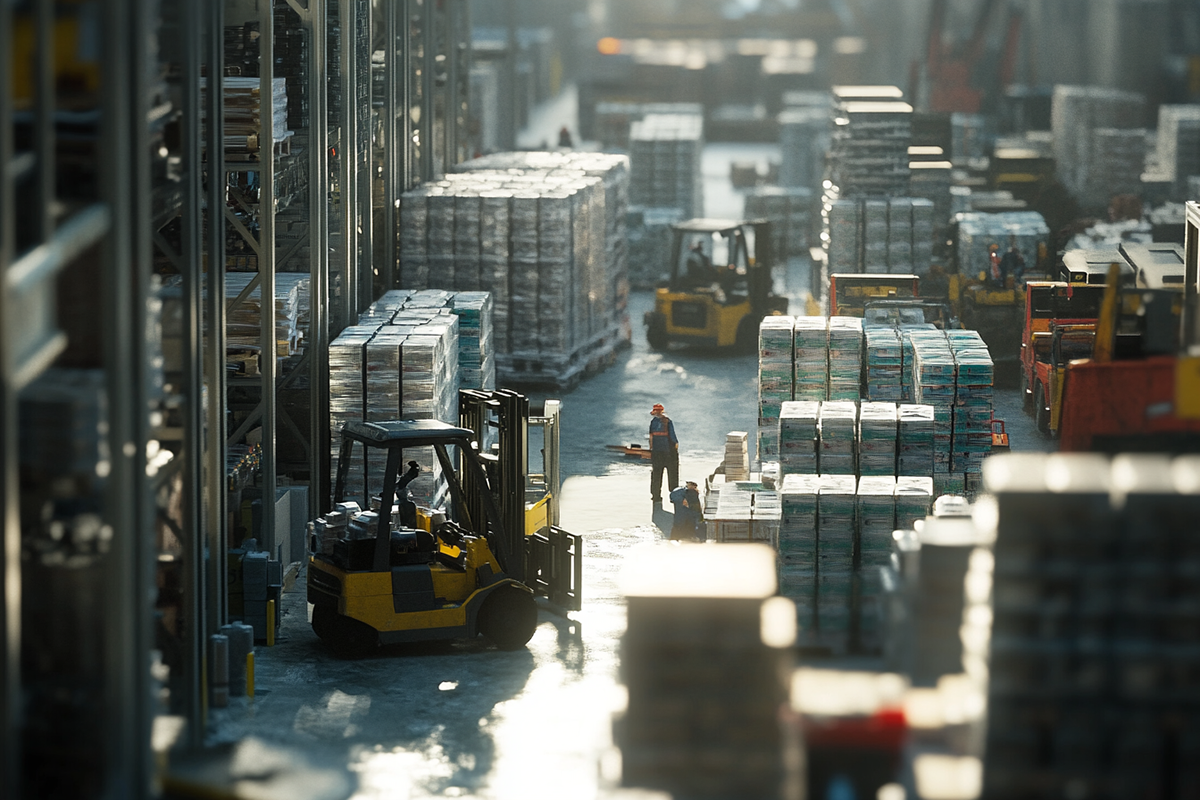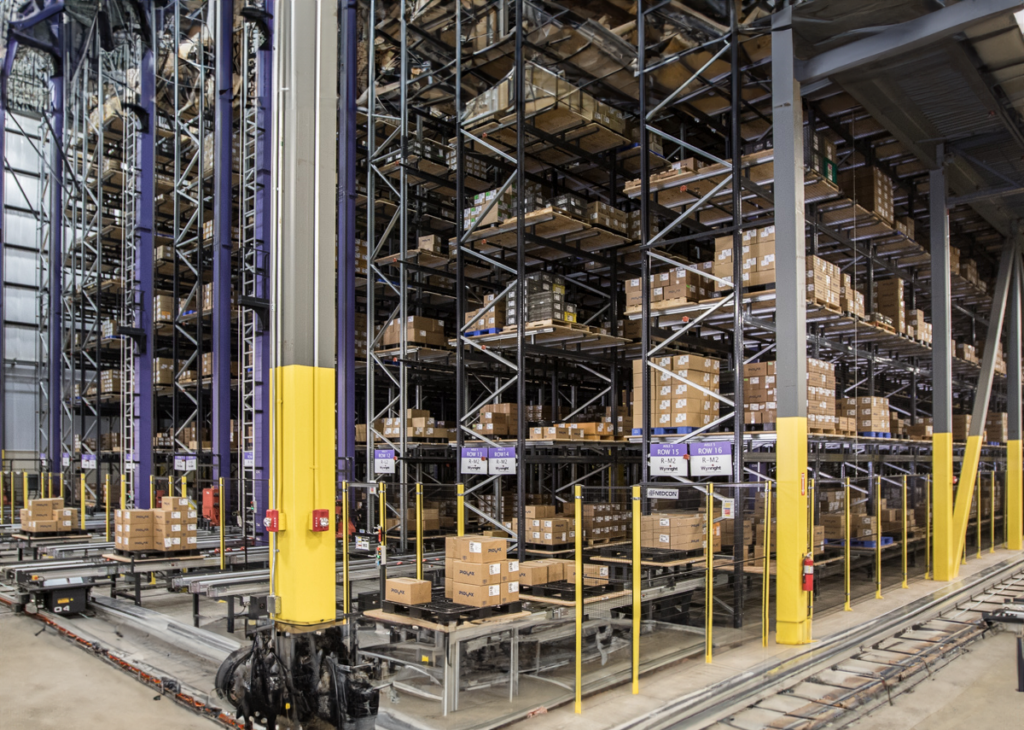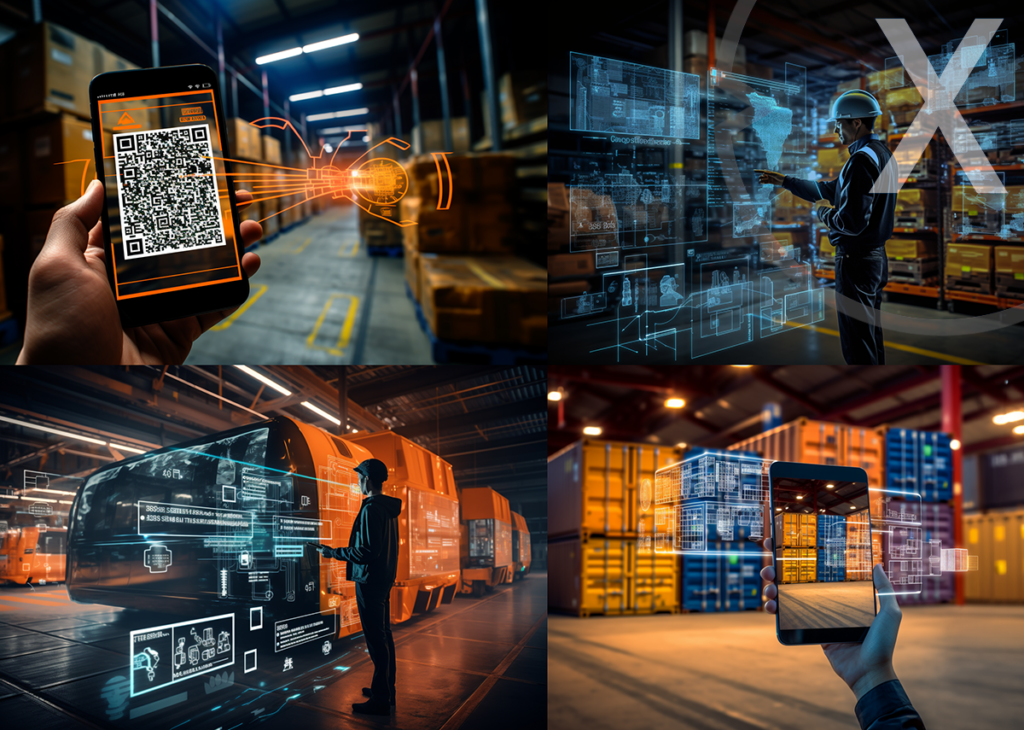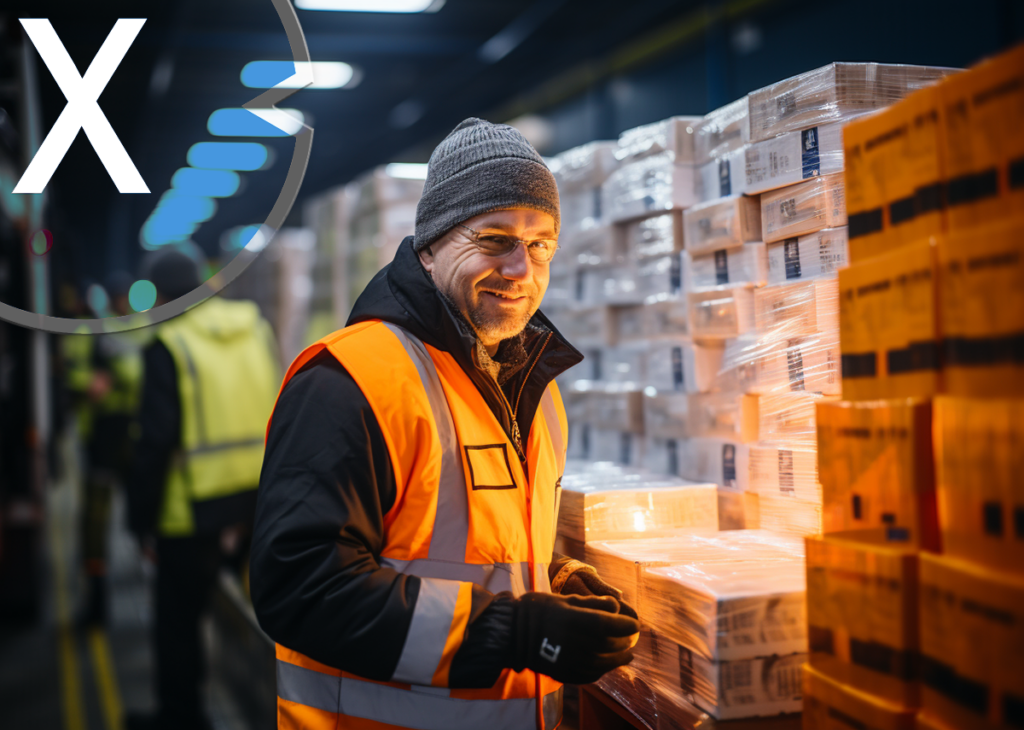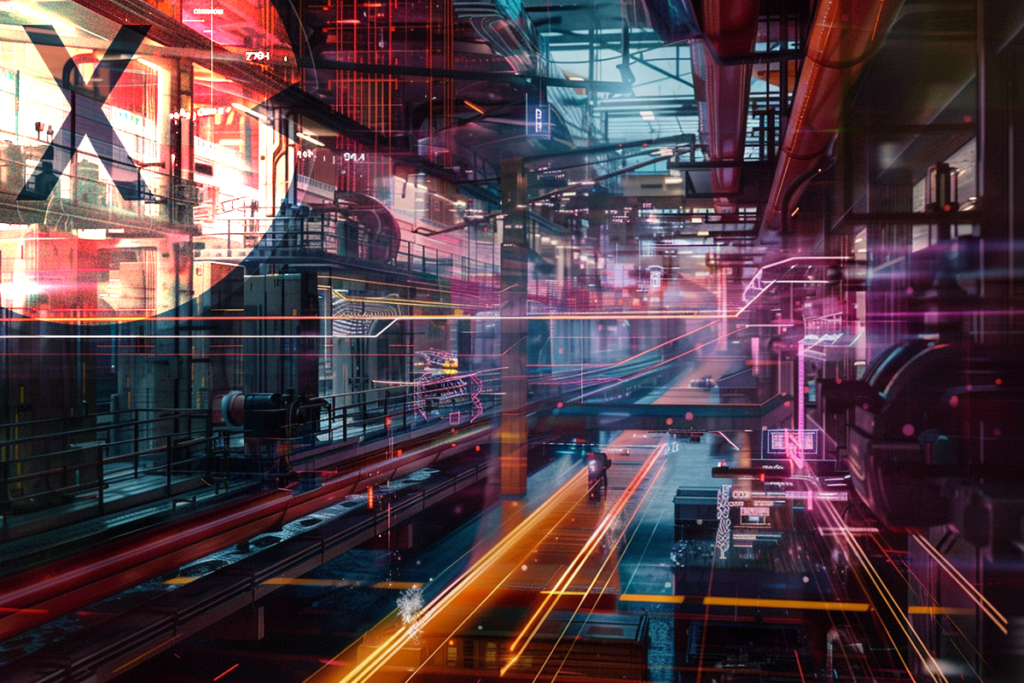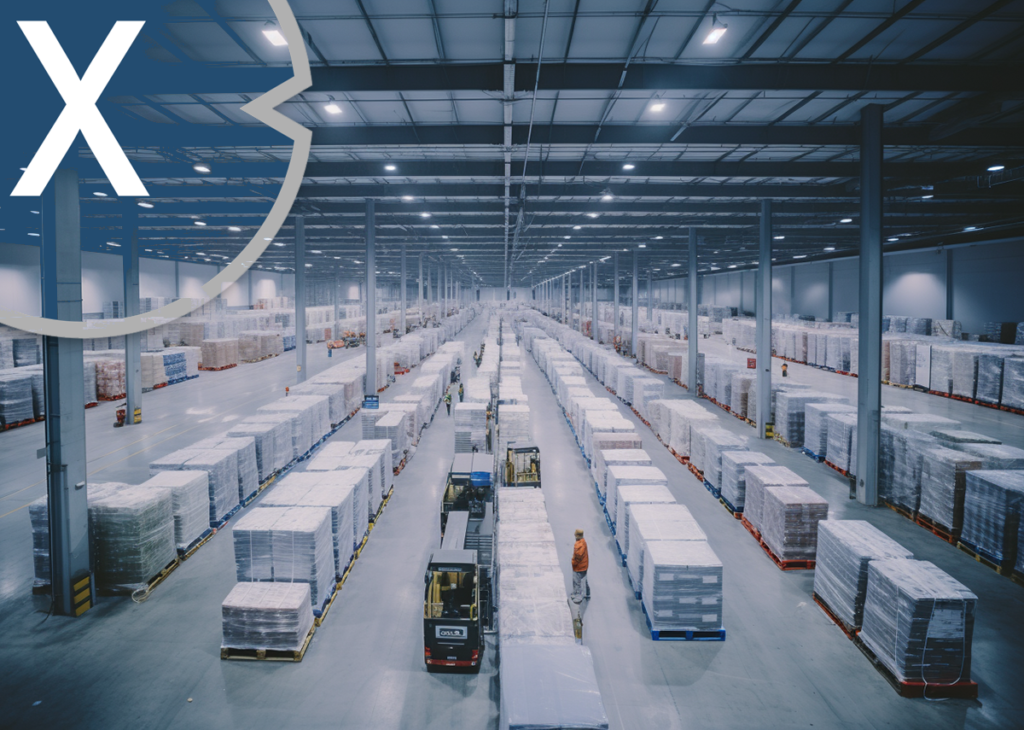Published on: November 11, 2024 / update from: November 11, 2024 - Author: Konrad Wolfenstein
Avoid delays: efficiently eliminate bottlenecks in logistics
Dissolving logistics blockages: strategies for identification and solution
Bottlenecks in intralogistics and logistics in general arise when certain processes, resources or systems do not work with the required efficiency and thus slow down the entire flow of materials or goods. These bottlenecks lead to delays, increased costs and reduced productivity. The most common bottlenecks in logistics and intralogistics as well as methods for identifying and eliminating them are described below.
1. Capacity issues
Overloading storage rooms, means of transport or personnel can lead to delays. Inadequate capacity planning or fluctuations in demand exacerbate these problems.
2. Provision of materials
Delivery difficulties or incorrect provision of materials (e.g. incorrect quantity or quality) lead to delays in production and increase search times for employees.
3. Inefficient inventory management
Incorrectly planned material requirements or inefficient inventory management can lead to warehouse shortages or overstocking, which hinders the flow of materials.
4. Transportation delays
Bottlenecks often arise due to an insufficient number of means of transport or overloaded transport routes, which slows down the flow of goods.
5. Outdated systems and technologies
Manual or outdated management systems can severely hamper operations and cause bottlenecks. Modern technologies such as automated warehouse management systems can help here.
6. Lack of transparency and communication
Confusing processes and poor internal communication mean that problems are not identified in a timely manner, leading to delays and inefficiencies.
7. Shortage of staff or poorly trained staff
Bottlenecks can arise due to a lack of staff or inadequately trained employees, especially if they are unable to complete tasks efficiently.
Methods for identifying bottlenecks
1. Bottleneck Walk
A simple method for identifying bottlenecks is to observe the production process along the value chain. Machines, processes and inventories are analyzed to locate bottlenecks.
2. Monitor data analysis and KPIs
Analyzing relevant key performance indicators (KPIs) such as production times, downtimes and throughput rates helps to identify bottlenecks at an early stage.
3. Employee survey
Employees are often able to identify bottlenecks more quickly than external observers. Regular surveys can provide valuable information about inefficient processes.
4. Simulation models
Virtual replicas of processes make it possible to simulate potential bottlenecks and test solutions in advance.
Measures to eliminate bottlenecks
1. Optimization of processes
Regular process reviews and optimizations help eliminate inefficiencies and improve material flow.
2. Use automation technologies
The use of modern technologies such as automated storage systems or pick-by-voice systems can increase efficiency and prevent bottlenecks in material transport.
3. Increase capacities
Bottlenecks can be avoided by using additional resources such as more storage rooms, means of transport or personnel.
4. Training of staff
Regular staff training ensures employees work more efficiently and make fewer errors, improving overall performance.
5. Improved planning and coordination
Detailed planning of the logistics processes from procurement to delivery can help to identify and avoid potential bottlenecks at an early stage.
Through a systematic analysis of the processes and the targeted use of modern technologies, many of these bottlenecks can be identified and eliminated, which significantly increases the efficiency of intralogistics.
Suitable for:
- How ASRS transforms your factory as optimized logistics and future-proof warehousing - Image: Daifuku
- Future scanned: QR codes or 2D matrix codes as drivers of future logistics - Image: Xpert.Digital - AI & XR-3D rendering machine (art photo/AI)
- Edge AI in logistics, intralogistics, industry and production: focus on automotive, mechanical engineering and energy sectors - Image: Xpert.Digital
- Cold order picking in fresh produce logistics and cold logistics – Image: Xpert.Digital
- The Internet of Things is revolutionizing logistics: real-time data in production, industrial and warehouse halls as the key to success - Image: Xpert.Digital
- How can packaging materials help save costs? – Image: Xpert.Digital – AI & XR 3D Rendering Machine (art photo/AI)
The 'Bottleneck Walk' method
The “Bottleneck Walk” is a proven procedure for identification and eliminating bottlenecks in logistics and intralogistics. Bottlenecks, the so -called “Bottlenecks”, are processes or capacity limits that slow down the material flow and thus impair the entire operating sequence. In order to ensure a smooth and efficient goods and material flow chain, it is crucial to recognize and fix such bottlenecks at an early stage. The Bottleneck Walk method offers a systematic approach to uncover and optimize the weaknesses within the warehouse processes. In modern logistics, in which the requirements for flexibility and speed continuously increase, this technology is becoming increasingly important.
What is the Bottleneck Walk?
The bottleneck walk refers to a structured analysis of a logistics system in which weak points are identified along the process chain in real time. Employees are included directly in the analysis because they can provide valuable insights and experience from their daily dealings with the respective processes. This direct involvement of personnel has advantages, as bottlenecks often cannot be discovered through technical data or key figures alone, but rather by observing the actual process flow. The Bottleneck Walk therefore offers a practice-oriented perspective and opens up new approaches that are often overlooked by conventional analyses.
The aim is to obtain a detailed “snapshot” of ongoing operations through systematic observations, discussions and data analysis. This uncovers bottlenecks in processes such as material provision, storage, picking or shipping. This method is particularly helpful in intralogistics, as many small-scale processes often intertwine and influence each other.
Why do bottlenecks arise in logistics?
Bottlenecks can be caused by a variety of factors, which can have personnel as well as technical or structural reasons. They often result from insufficient storage capacity, outdated technology or insufficiently optimized processes. Other factors can include insufficient automation, a lack of interfaces between individual processes or a lack of staff training. In times of digitalization and automation, bottlenecks can also arise from a high level of dependency on IT systems, which can paralyze the entire operation in the event of failures or malfunctions.
A detailed analysis, such as that made possible by the Bottleneck Walk, can bring these causes to light. Bottlenecks often arise from increasing demands for speed and flexibility in logistics. Many companies are under pressure to ensure deliveries within the shortest possible time and still work cost-efficiently. If these requirements are not fully met, processes can come to a standstill and delays arise that extend through the entire logistics chain.
The Bottleneck Walk methodology
The Bottleneck Walk begins with defining the scope of analysis and goals. As a rule, a specific process area is defined in which bottlenecks are suspected. A multidisciplinary team of logisticians, warehouse managers and technicians goes through the entire process step by step to identify possible bottlenecks. They pay attention to special features such as:
- Waiting times: Where and why do waiting times arise? Are there processes that repeatedly stall?
- Transport routes: Are the routes between the individual storage stations or machines optimized, or do long transport routes lead to delays?
- Workstations: Are the workstations ergonomic and set up for a flowing process, or do awkward placements create additional walking paths?
- Capacity limits: Where do overloads occur? Are machines or systems limited in their performance?
The observations are discussed and recorded directly on site. At the same time, employees in the respective areas are spoken to in order to gain insights into their daily challenges. By involving staff, not only theoretical analyzes are carried out, but also the practical perspective is taken into account, which can lead to more realistic and directly implementable optimization measures.
The role of digitalization in the Bottleneck Walk
Digitalization is becoming increasingly important in modern logistics processes. Digital systems such as warehouse management systems, real-time tracking and big data analyzes can provide crucial support for the bottleneck walk. For example, the use of sensors and data analyzes can help to locate process weak points more precisely and objectively. Warehouse management software makes it possible to monitor certain key figures such as lead times, utilization and inventory levels in real time and to detect deviations at an early stage.
Digital support complements the Bottleneck Walk by supporting the subjective impressions and observations with hard data. This creates a more comprehensive picture of the processes and possible bottlenecks can not only be identified, but also quantitatively assessed. Digitalization also creates the basis for further automation and optimization of processes. By using robotics and automated systems, efficiency in intralogistics can be further increased and the dependence on manual workers in critical areas can be reduced.
Measures to eliminate bottlenecks
Once the bottlenecks have been identified, it is important to take measures to eliminate them. This can take the form of structural adjustments, optimizing work processes or investing in new technologies. Possible approaches to eliminating bottlenecks could be:
1. Process optimization
Significant improvements can often be achieved through simple changes and adjustments to work processes. For example, material routes can be optimized or workplaces can be made more ergonomic.
2. Capacity expansion
In the event of recurring bottlenecks, it may be necessary to expand machine or storage capacities. However, this should be carefully examined in terms of cost effectiveness and actual needs.
3. Automation
Automating certain work steps can reduce the workload on staff and increase efficiency. Examples of this include automated conveyor systems, driverless transport systems and robotics in order picking.
4. Training of staff
A well-trained workforce can make processes much more efficient. Through regular training and further education, staff can be empowered to independently identify bottlenecks and make suggestions for improvements.
5. Use of technology
Modern warehouse management systems and IoT technologies offer extensive possibilities for process monitoring and optimization. By using such technologies, bottlenecks can be identified and avoided more quickly.
The benefits of the Bottleneck Walk
The Bottleneck Walk offers a variety of advantages for intralogistics. The method is relatively inexpensive because it does not require complex technical equipment, but rather is based on the observations and know-how of the employees. The involvement of staff also creates a high degree of acceptance for the subsequent change measures, since the employees themselves are involved in the solution process and their perspectives and needs have been taken into account. The Bottleneck Walk also enables quick and practical solutions, as the identified bottlenecks can be discussed directly during ongoing operations and, if necessary, immediate adjustments can be made.
Another advantage is the continuous improvement of work processes. The Bottleneck Walk can be used as a recurring procedure to ensure high efficiency in logistics in the long term. Carried out at regular intervals, process optimizations can be quickly adapted to changing requirements and conditions.
The Bottleneck Walk as a valuable tool in modern logistics
The Bottleneck Walk is an effective method for identifying and eliminating bottlenecks in logistics. Through the practical approach and the involvement of employees, weak points can be efficiently identified and suitable solutions can be developed. Particularly in times of increasing demands for speed and flexibility in logistics, the Bottleneck Walk is a valuable instrument for ensuring the long-term efficiency and competitiveness of a company. The combination with modern digital tools such as warehouse management systems and automation technologies can further increase the effectiveness of the bottleneck walk and thus create significant added value for intralogistics. A systematic approach and open communication with staff are essential in order to achieve the best results and to optimally adapt the logistics processes to the requirements of the market.
In this sense, the Bottleneck Walk not only offers short-term solutions, but is also an approach that enables sustainable process optimization in intralogistics and thus makes an important contribution to increasing the company's overall performance.
Suitable for:


